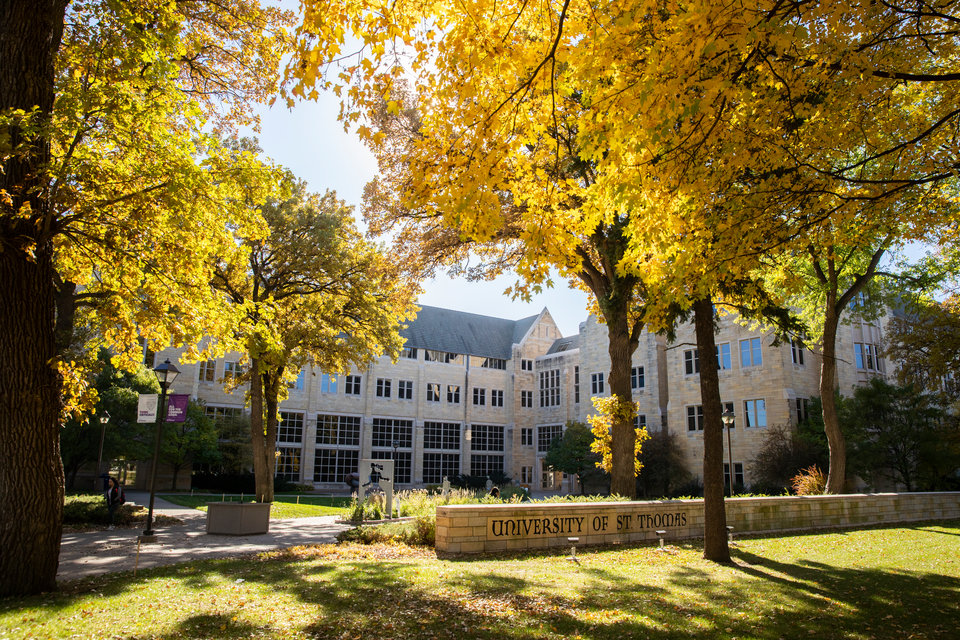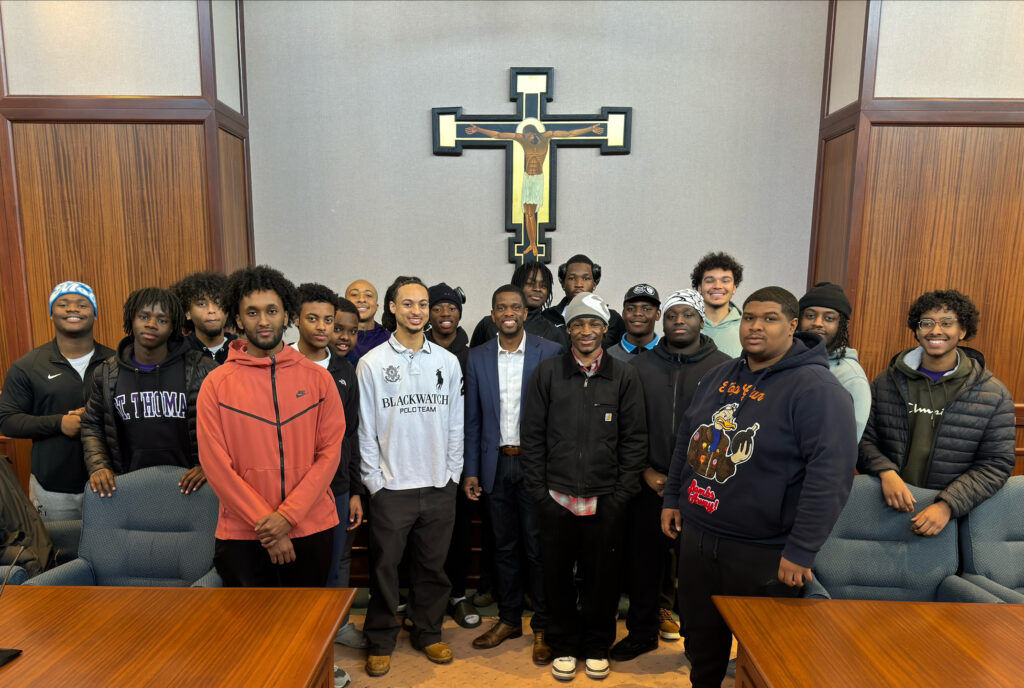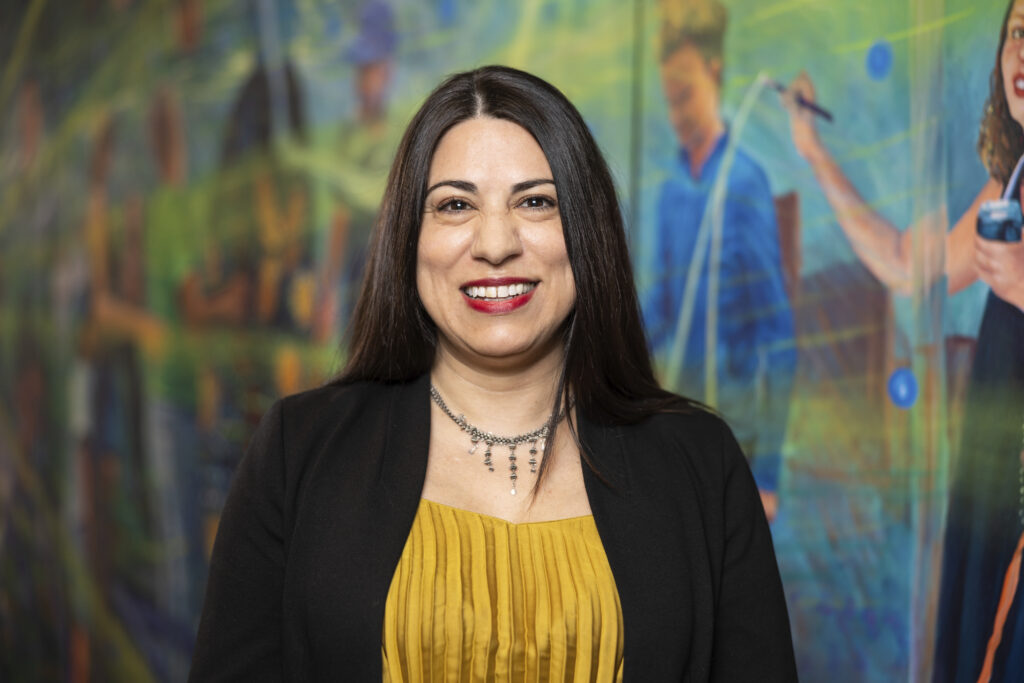Several administrators gave updates on a wide range of efforts stemming from the action plan, detailing both short- and long-term aspects.
“Our university is at a really important moment in time,” President Julie Sullivan said. “Racism still exists on our campus. … It exists sometimes in less visible ways, in our structures, policies and processes, just as it does across our state, country and organizations. Things have happened in our society and been embedded in processes and policies that give advantage to white people. That’s something as a white person I’m trying to understand, peel back and deal with. … It’s a long journey for me as an individual. It will be a long journey for us as a community. We can engage in it together.”
Sullivan provided an update on elements of the action plan tied to budget and communication.
Budget
Short term
- "A number of our departments are reallocating resources to do things quickly," Sullivan said. The opening of the Intercultural Center is an example of reallocated resources.
- "We are putting new resources into training and opportunities for dialogue, specifically through Student Affairs," Sullivan said. An example of this was the Feb. 11 screening of the film “American Textures.”
- Abdul Omari is being tapped to lead additional training on campus.
- The Wilder Foundation has been hired to do training with the President’s Cabinet, as well as diversity, equity and inclusion training with department chairs.
- Reallocating resources for the creation of the Associate Vice President of Inclusive Excellence position, as well as reallocating resources for that office. "When we hire that leader they will hire someone to come in and do an external assessment of where we are across the university in diversity, equity and inclusion work," Sullivan said.
- More resources are being put toward the Excel! Scholars program to maintain the number of students benefiting from that program.
Long term
- Financial aid policies: A reexamination is ongoing of how St. Thomas rewards financial aid to ensure it best meets the needs of our underrepresented students.
- Looking at the two-year residency requirement and ensuring that is implemented in a way that the access to the two-year residency and all its benefits are equally accessible to all students.
“We’re ensuring we’re putting the resources behind implementing this plan,” Sullivan said.
Communication
“Communication is always a challenge. We’re trying to proactively communicate the progress we’re making toward implementing the action plan,” Sullivan said. “There’s a website on OneStThomas under the President’s Office we keep updated. There’s been a continuous flow of articles in the Newsroom so people can be aware of what’s happening. You’ll continue getting emails from me. But we know that’s not enough. You have to communicate in many ways because people get information in different ways. I continue to invite you to give us more feedback to how we can better communicate.”
Anti-bias reporting system
Chief of Staff Amy McDonough provided updates on the anti-bias reporting system, and several people detailed the development of training resources.
The anti-bias reporting system was one of the first things that happened when the plan was announced. “We realized we didn’t have a robust way to report an incident,” she said. The revamped reporting system is available here.
“It’s now clear who is responsible for responding to that incident so it’s responded to in a timely manner,” McDonough added. We have gotten a significant number of reports. We do feel the system is moving well.”
Training
- Mandatory training for all students, faculty and staff: A task force is securing an online training tool that will be mandatory for all St. Thomas community members to complete.
- Human Resources has been putting together an inventory of existing training efforts across different staff departments. “There are about nine departments (identified as needing support) that Human Resources will be working with to bring training to them,” said Michelle Thom, associate vice president for human resources.
- Manager’s forum: Everyone in a managing position will be required to attend training on bias led by Omari.
- Seeking Educational Equity and Diversity: Three staff members were trained last year as facilitators, and a cohort of employees is undergoing that program this year. The university is sponsoring the training of up to six new facilitators this summer in an effort to grow more cohorts next year and beyond.
- The Wilder Foundation will be facilitating training for the President’s Cabinet as well as for all full-time faculty members: “By the end of the school year, all full-time faculty will have engaged with an online inquisitive bias tool,” said Ann Johnson, associate vice provost for faculty development. “Departments will be talking about how they can use that knowledge and bring it into the classroom. Adjunct faculty will get involved with that training in the fall.”
“It’s a top-down and bottom-up approach,” McDonough said. “The leadership is serious about everyone getting the training we need.”
Trauma resources
A hiring is in the final stages for a dedicated position of multicultural specialist in Counseling and Psychological Services, building on the current staff specializations for veteran students and LGBTQ students.
Residence life: Climate and construction
Director of Residence Life Aaron Macke detailed efforts playing out in the residence halls and with student leaders to bring engagement and learning more explicitly into the residence halls.
“We’re partnering with enrollment services and Marketing, Insights and Communications around how we look externally, the shaping of future classes, of our residence life populations,” Macke said. “We’re adding language built in about expectations to do diversity, equity and inclusion work. We’re scrubbing and redoing all elements of our materials. All websites, all brochures, everything, with some strong lenses toward being more clear and candid around expectations of learning diversity, equity and inclusion, and what we want to engage you with as students in our residence halls.”
- Construction and renovation: “How culture gets created and reflected in space matters. We have an unbelievable opportunity with two new halls and renovations of two existing halls to transform those spaces into those that look, feel and are inclusive,” Macke said.
- Recruiting and hiring of staff as student leaders: “This is the single most important thing we can do. It’s front and center in our mind. … Our student leadership population is a wonderfully diverse group who are engaging with residents on a daily basis, doing difficult work, trying to be leaders and influencers around our climate.”
- Training for student leaders to do this work: “There’s a committee dedicated to shaping that training to make sure our student leaders are doing diversity, equity and inclusion work and well prepared.”
Faculty initiatives
Associate Vice President for Faculty Advancement Ann Johnson talked about several faculty-specific initiatives, including:
- Conversations in the classroom: Johnson and others in faculty development are putting the finishing touches on a tool kit for faculty to better facilitate conversations around diversity, equity and inclusion.
- Faculty hiring and retention: “We’ve been working on revamping our process for training search committees for hiring new faculty,” Johnson said. “There is required training for the chair of the committee, and also one search committee member and designating them as the diversity advocate who will monitor every level of the process to make sure diversity and equity concerns are being integrated.”
- A faculty retention advisory group has been formed to develop plans around retaining diverse faculty and making sure they feel welcomed and supported as faculty members.
- A policy has been implemented for all new faculty hires that at least one finalist is from an underrepresented group.
Pedagogy and curriculum development
Associate Vice Provost Rob Riley said a faculty and staff team of about 30 people will work on how to implement the new core curriculum, specifically the diversity inclusion and social justice flagged courses, and first-year experience.
Representing diversity with integrity
Chief Marketing Officer Kymm Martinez updated work stemming from Marketing, Insights and Communications (MIC), including consideration of tactics out of the anti-hate campaign last October, which created anti-racism buttons and door posters.
“There is a recognition that you cannot market your way out of this and that is not our intent,” Martinez said. “It’s to provide something you can wear to show your solidarity. A marketing campaign is not going to solve what we need at St. Thomas.”
Martinez explained that MIC cancelled a marketing campaign in November “to make sure we weren’t turning the page away from the conversation we are needing to have.”
“We’re in a mode of waiting,” she said. “We would love to amplify a campaign a student or group has. We’re not in a place of creating a campaign and forcing it on to the campus. It would feel inauthentic if we were trying to do this from our central group.”
MIC has also taken several steps to represent diversity with integrity more effectively, including forming a committee to lead that effort. Coming out of that is:
- A series of guiding principles for MIC’s work. This is available on the MIC page on OneStThomas.
- An annual audit of inviting people from across campus to comment on our marketing throughout the year.
- Every person in MIC is going through Intercultural Development Inventory training, including a 12-month plan for both individuals and as an organization. Every individual in FY20 will have performance goals related to their advancement of their personal journey around diversity, equity and inclusion.
- Next year’s admission materials: “We will make sure our convictions are very clear. Anyone who harbors racist feelings or feel like they’re coming to an environment where they can voice racist views, that those are not welcome here,” Martinez said. “We will make that more clear in our materials.”
Enrollment
Vice President for Enrollment Al Cotrone spoke about the university’s efforts to recruit a more diverse student body, highlighting the projection that – as of now – St. Thomas is on pace to bring in a first-year class next year with more than 20 percent of students identifying as not Caucasian. This is in large part, he said, because of how the St. Thomas community has reacted since the racially-motivated incident last October.
“The action we’ve taken, the action plan, the engagement from students and working with us, has been out there and given us as recruiters things we can talk with prospective students and families about,” he said. “We can reference our community, how it reacts, what it stands for and who is welcome here.”
Cotrone spoke about several specific efforts, as well. Subcommittees were formed to examine and focus, Cotrone said, on:
- How we can each individually get better at addressing our own biases.
- What are we doing this year in this recruitment cycle that we can change?
- Asking what we need to be able to make the difference we want.
- “As we give tours and look around campus, what do we wish was different?” Cotrone said. “We did internally our own assessment, and then are approaching our colleagues across campus for things we want to change around campus.” Cotrone called out the need to have more diverse representation across enrollment’s ambassadors team. “We are asking for help this year and next year, and layering a plan to improve the level of diversity visitors experience with guides here on campus,” he said.
Other actions include:
- Increasing the number of Dease Scholarship awards this year.
- Contracting with a new affinity organization through which enrollment can source and expose St. Thomas to more diverse students who may not have heard of the university.
- Added a sentence to admission letters that says we will expect you to join us as we enhance our diversity and inclusion at the University of St. Thomas. “They know that is an expectation for as they come here,” Cotrone said. “For next year we are replacing our preexisting optional essay that you have to read before you opt out, and that optional essay is going to say, ‘Here is what our community stands for. Here is who is welcome here. What will you do as a Tommie to enhance that on this campus?’ They have to read that. That’s a very visible change next year to make it very clear what we expect.”
Recruiting and retaining diverse employees
Associate Vice President for Human Resources Michelle Thom highlighted several initiatives revolving around the recruitment and retention of more diverse employees.
- “In our job postings now we have bumped up to the top of every posting language around the importance of diversity and inclusion here at St. Thomas,” Thom said.
- Resurrect our affinity and employee resource groups.
- Implementing a pilot blind resume screening program to see if that has an impact on diversity coming in the door.
- Host more networking opportunities for our employees of color to gather and do some community building.
- Leadership Academy offerings: Two years ago started Diversity and Inclusion training; those will begin to have badging and certification measurements attached to them.
- Applicant experience: Create a survey to go back to our diverse candidates to ask about their experience as applicants and interview candidates to get more information to be better in recruiting employees of color.
- Host focus groups around topic of retention: “What keeps our diverse employees here, and how can we replicate those best practices? We’re turning over about 8 percent of our employees of color each year. That’s significant and something we need to change,” Thom said.
- Outreach in the community at large to get a sense why diverse members of our community are not applying for jobs.
- Working on developing a mentoring program for employees of color.
- Performance assessment system for employees: HR is putting together language around what it means to achieve diversity in your role as an employee.
- Creating a competency for our managers, specifically in how they supervise employees of color.
- Developing framework for employees to have an individual professional development plan, specifically to our underrepresented employees.
- Building into on-boarding system a diversity module.







